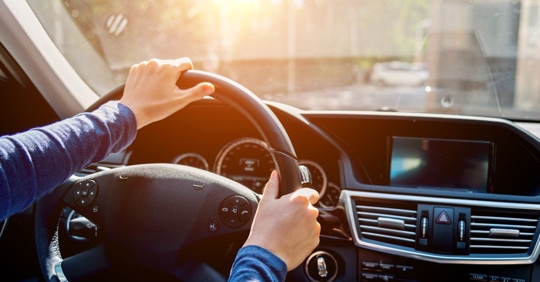With a projected population of 45 million by 2050, California’s roads will continue to be flooded for years to come. Knowing this, it is essential that drivers take the time to learn specific laws that can help keep all motorists safe. Whether you were born in the state or just moved, here are four laws that any California driver should know.
1. The “Basic Speed Law”
Every driver knows they should follow the speed limit, but California takes it one step further by enacting a "Basic Speed Law." Under this law, drivers are only permitted to drive as fast as what is considered safe for the current road conditions (regardless of the speed limit). This means that if the posted speed limit is 50 mph, but it is raining and visibility is low, drivers should slow down to a speed that will reduce the likelihood of crashes.
While the Basic Speed Law may seem like common sense, it is often broken—especially in places like Los Angeles, where traffic can be heavy and fast-paced. If you are caught driving over the safe speed for conditions, you may face negative consequences.
2. Slow Down or Move Over
In 2009, California enacted a “move over” law that requires drivers to slow down and/or move over when they see roadside emergency vehicles with their lights on. This includes tow trucks, Caltrans vehicles, law enforcement vehicles, and CHP cars. If you cannot move over because of traffic or other hazards, you must slow down to a speed that is safe for the conditions (usually 20 mph below the posted limit).
A violation of this law may result in a fine of up to $1000 and points on your driving record.
3. Driving Near Cyclists
With more people biking to work and for recreation, it’s important that drivers know how to share the road with cyclists. California law requires that motorists give cyclists a three-foot buffer when passing and return to their original lane once safely past. Additionally, cyclists are allowed to ride side-by-side as long as they are not impeding traffic—so if you see two (or more) bikes next to each other, do not try to squeeze between them.
Bicyclists should also be aware that they must follow the same right-of-way laws as motor vehicle drivers. This means they must yield when entering from an alleyway or driveway and obey all traffic signs and signals.
As a driver, it is your responsibility to yield to oncoming cyclists and give them space to safely make their turn. Ignoring the rights of cyclists can result in a fine, points on your license, and even jail time if an accident occurs.
Learn More: What Rules Do Bicyclists Have to Follow?
4. Who Has the Right of Way?
Drivers may encounter many different right-of-way scenarios, but one of the most common is at a four-way stop. At a four-way stop, the driver who arrives first should proceed through the intersection before any other car. If two cars arrive at the same time, the driver furthest to the right should go first.
When encountering a pedestrian, drivers should be cautious and slow down to a safer speed—even if the pedestrian is at a crosswalk or on a sidewalk. It's important to know that pedestrians have the right of way, even if in an unmarked crosswalk. Drivers should also avoid parking or stopping in a marked or unmarked crosswalk.
Los Angeles Motor Vehicle Accident Attorneys
The team at Effres & Effres has been helping car accident victims recover damages following crashes for over 40 years. We understand the complexities that may appear throughout your case and can help you have a thorough understanding of your rights. Schedule a free consultation with one of our attorneys today by calling (818) 222-9720.

